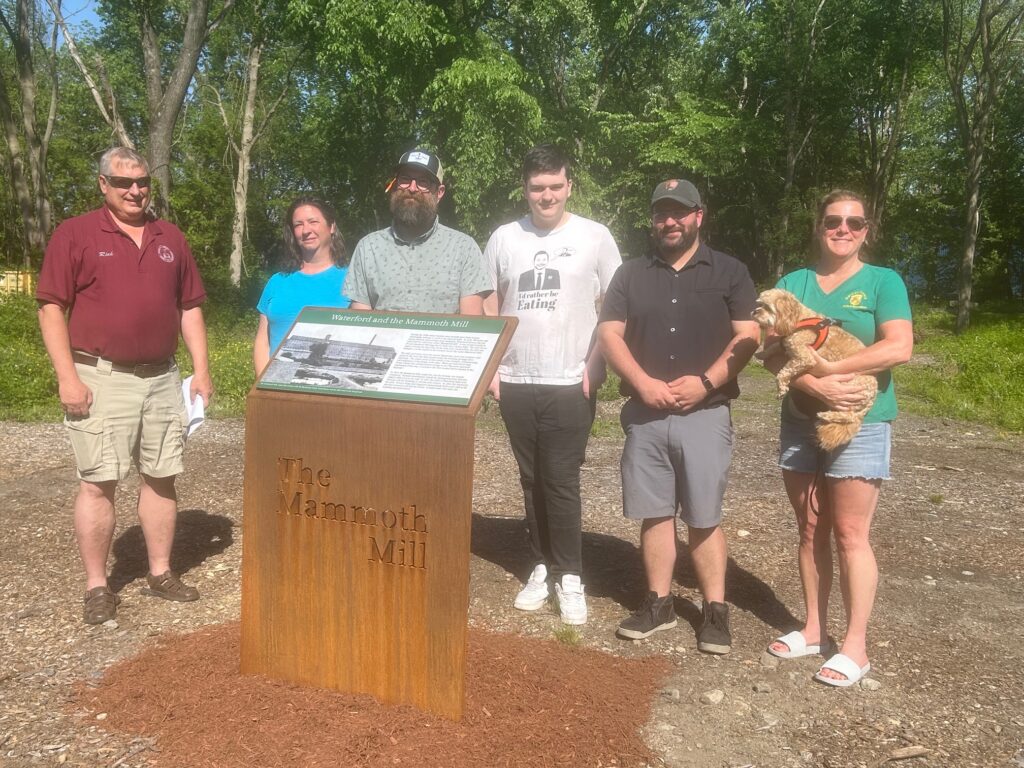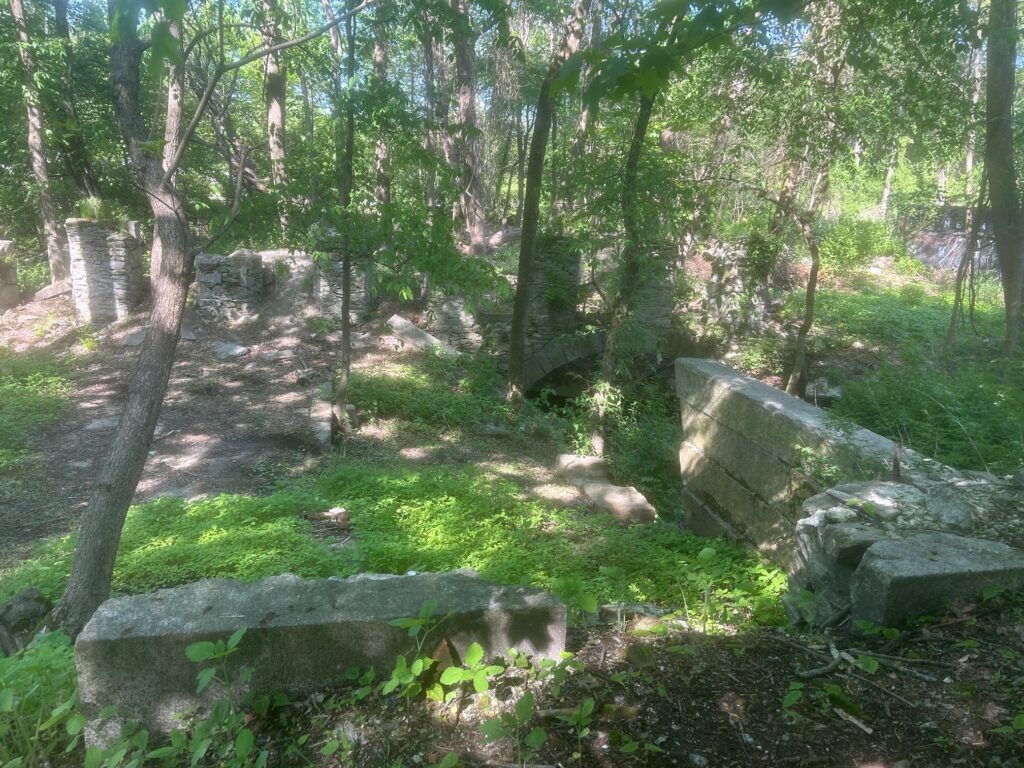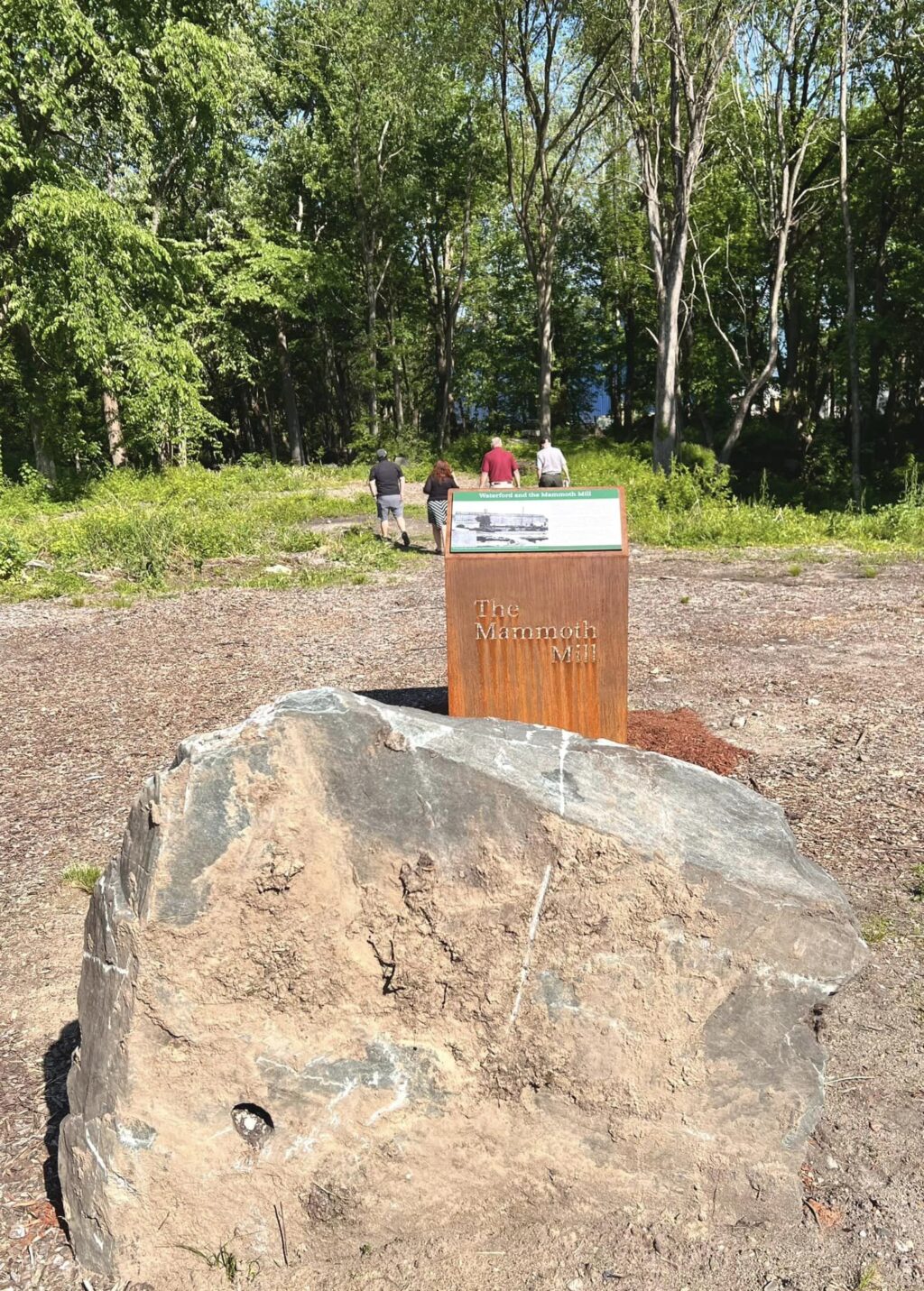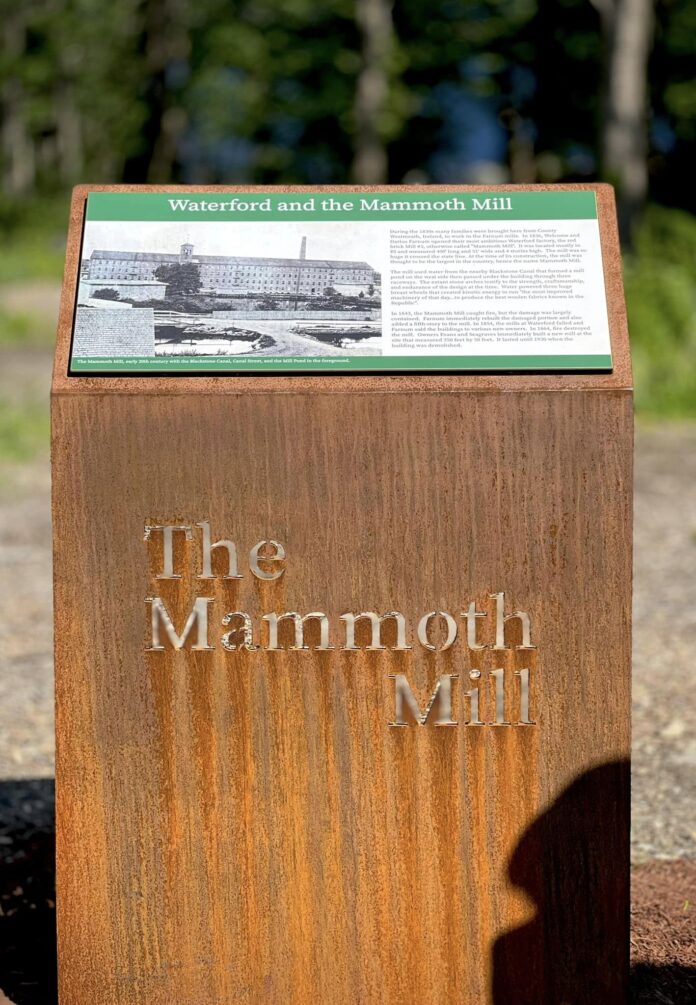NORTH SMITHFIELD – It’s been 17 months since volunteers with the National Park Service, the Blackstone River Heritage Corridor, Friends of the Blackstone, and the North Smithfield Heritage Association began cleaning a historic site at the town border in earnest, with hopes to create a new park highlighting the area’s significance.
This week, the group celebrated a grand step forward in the effort, revealing a new sign marking the former Mammoth Mill, donated by RiverzEdge Arts Project.

Welcome Farnum opened his first mill in the area in 1825, marking the start of what would soon become the village of Waterford. Farnum built a second mill there in 1828, the same year construction of the Blackstone Canal was completed. The canal allowed passage from Providence to Worcester by boat, a journey NSHA President Richard Keene noted took two days at the time.
Farnum’s third mill, located mostly in Rhode Island with buildings sprawling into what is now the neighboring community of Blackstone, Mass., opened in 1936. Once complete, the four story Mammoth Mill measured 400′ long and 51′ wide, and was believed to be the largest textile mill in the country. By that time, use of the waterway had been replaced by development of the nearby railway, and Farnum was able to divert water from the canal to power his factory.
A fire damaged the mill in 1843, but Farnum immediately repaired the building, also adding a fifth story. He sold the structures in 1854, and a second fire in 1864 destroyed the facility. It was again rebuilt, and Keene noted it is unclear when the mill officially closed, but there was demolition on the site in 1930.
Building foundations, dams, canals, locks, and raceways, however, still remain, creating ruins that for years, have offered a unique, if prickly, destination for brave adventurers.

“It remained the way it is until this day,” Keene said. “It’s a part of North Smithfield that a lot of people don’t know anything about.”
The property was donated to the town a few years back, and Keene and others began clearing the lot with support from North Smithfield Department of Public Works.
Burrillville resident Samantha Young noted she had been visiting the site for years when she heard of the groups’ cleanup initiative.
“I knew I’d better help out,” she said.
Young was among those gathered on Wednesday, May 22 to mark the success of the effort.
When they first began holding the monthly cleanups, Keene noted, the area was so overgrown that, “you couldn’t walk from the street to the stream.”
Now, cleared trails allow visitors a short hike to striking views of the water and mill ruins. Proponents hope to create access to the site from the nearby Blackstone Valley Bikeway, offering yet another historic feature to what will someday be a 48-mile path from Worcester to Providence.

Riverzedge Artistic Director Brad Fesmire and his students unveiled a new sign proclaiming, “Mammoth Mill,” that also offers visitors a brief history of the site. The sign is make out of corten steel, giving it a corroded appearance by design, with a unique material that develops a protective rust layer over time, while acting as a shield against further damage. Fesmire applied for a grant to design and build the new wayfarer marker, which was erected last week.
Keene noted it was Keith Hainley, river restoration coordinator for the Blackstone River Watershed Council, who originally had a vision for the park and led the clearing initiative.
“He’s responsible, really, for what the park looks like today,” Keene said.
For the volunteers, reclamation of the once forgotten area will continue.
“We plan to continue working here and trying to improve it every year,” Keene said. “Hopefully we’ll get as far as the Blackstone River in another year or two.”









